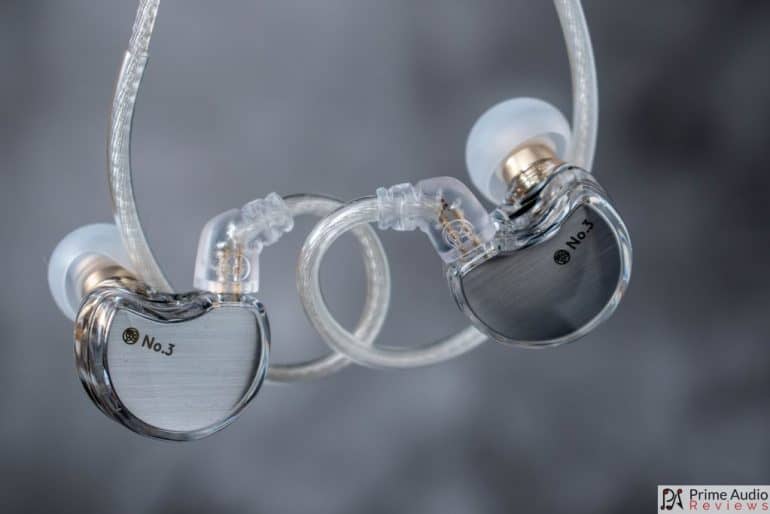TFZ (The Fragrant Zither) is a Chinese earphone manufacturer that many Chi-Fi fans will be familiar with already. Indeed, I have reviewed several of their products here in the past and have been pretty impressed with all of them. In this review, I’m checking out the TFZ No.3, a single dynamic driver in-ear monitor. Let’s do this!
By three methods we may learn wisdom: First, by reflection, which is noblest; Second, by imitation, which is easiest; and third by experience, which is the bitterest.
Confucius
This sample was provided for the purpose of an honest review. All observations and opinions here are my own based on my experience with the product.
- Tight, engaging bass
- Great build quality and comfort
- Detachable cable
- Clarity
- Moderate treble extension
- Some upper midrange glare
Package and Accessories
The No.3 comes in a typical TFZ style tall and narrow white box with some simple text on the front. Inside, the earpieces are secured in the usual foam insert and the other accessories are contained in another smaller box. Here’s what you’ll find inside the package:
- TFZ No.3 earphones
- Detachable 2-pin cable
- 3 pairs of narrow-bore silicone eartips
- 3 pairs of wide-bore silicone eartips
- Shirt clip
- Fabric carry pouch
- Instruction manual
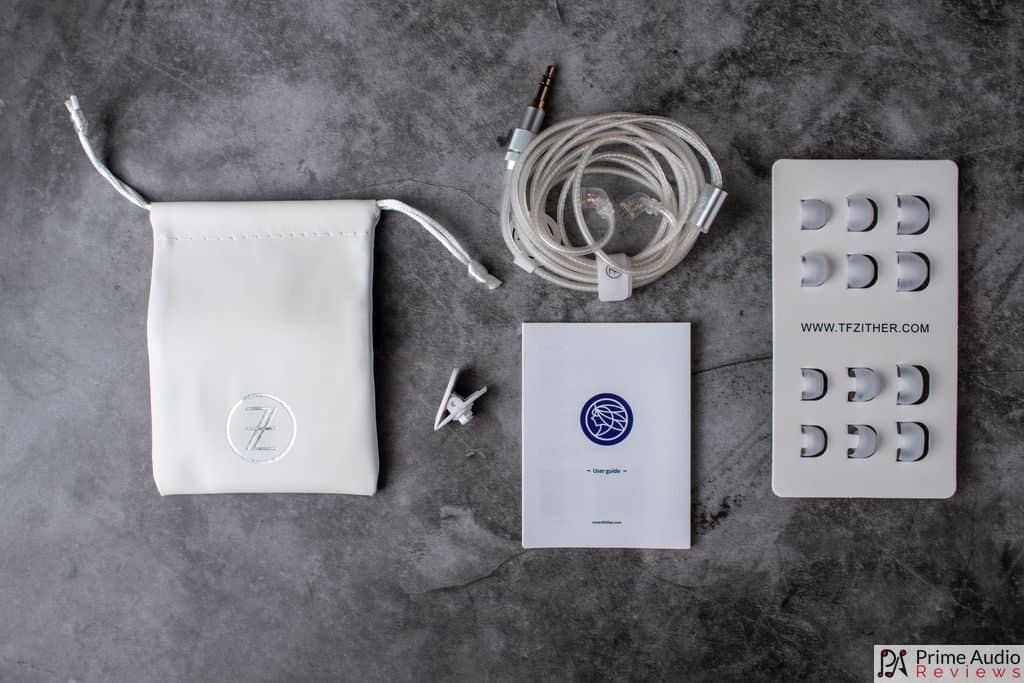
Build Quality and Design
The No.3 has clear acrylic shells that give you a direct view of the tidy internal structure and single dynamic driver. Beneath the clear acrylic faceplates is a brushed metal insert that adds some visual interest while maintaining the clean looks.
On the inner side of the shell there’s a single tiny vent near the base of the nozzle. The nozzle is metal and has a protective metal mesh covering the end. There’s also a nicely pronounced lip on the nozzle to give your eartips a secure hold.

Comfort and Noise Isolation
The No.3 has an ergonomic design with smooth, rounded edges all around and a very smooth surface. It’s a very comfortable IEM, at least for my ears and I can wear them for long periods without any discomfort.
Noise isolation is very good and slightly above average, making the No.3 suitable for a wide range of environments. Noise leak is practically non-existent too so you don’t need to worry about disturbing other people nearby.

Cable
The included silver-plated copper wire was a surprise as it is quite different from what we’ve been seeing lately. It has a thick, transparent TPU sheath covering the 2 wire strands and feels extremely robust and durable. Microphonics are minimal, the cable handles fairly well and it also fits in with the overall design aesthetic.
At the top end are the 2-pin connectors with transparent plastic housings. There are pre-formed ear guides made with clear plastic tubing. A small silver-coloured Y-split with the brand logo sits further down the cable but there is no chin slider present. The cable terminates with 3.5mm plug in a straight silver-coloured metal housing.
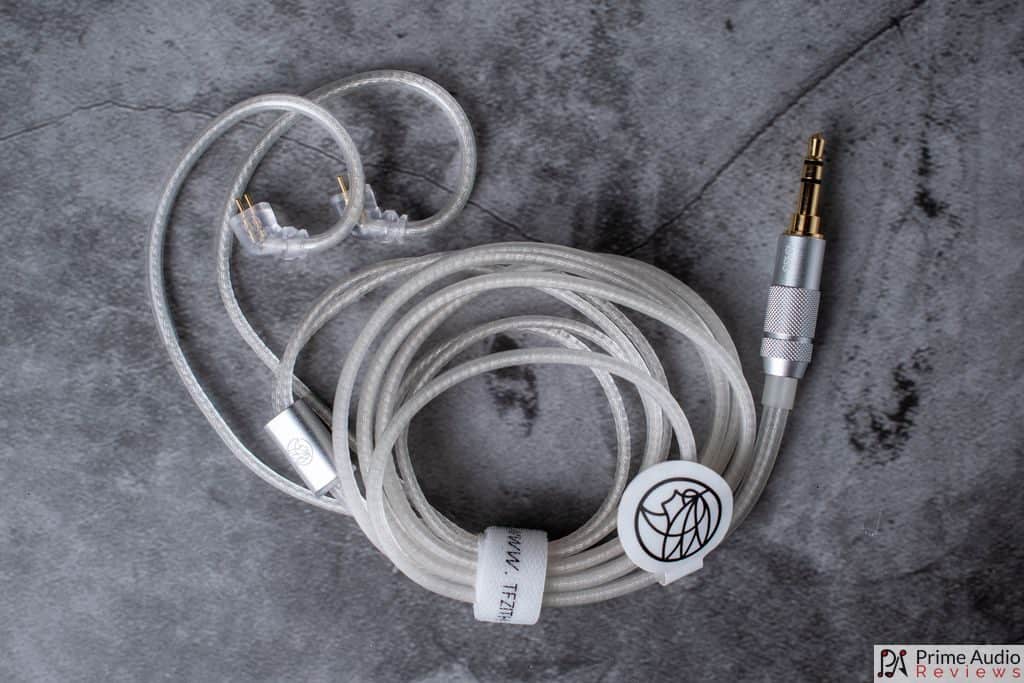
Sound
Gear used for testing includes the FiiO M6 as a portable DAP. I also tested it with the Shanling UP2 Bluetooth amplifier connected to my Android phone. On the desktop, the No.3 was plugged into my FiiO K3. The TFZ No.3 is very easy to drive, just like every other TFZ IEM I’ve used. A smartphone is more than capable of driving this earphone and it does not require any extra amplification.
The TFZ No.3’s overall presentation is slightly V-shaped and upfront with a meaty bass, super clean midrange and a lively treble. One of the first things that came to my mind when I tried the No.3 was that it sounded like a baby FiiO FH7, with its extreme clarity, weighted low frequencies and bright top end.

Bass
No.3’s bass is powerful and has great extension. It’s powerful but precise, with a medium-paced decay for extra impact. Sub-bass digs deep and while the bass isn’t the most textured it does cause some satisfying resonance within the acrylic housings.
The mid-bass is not quite as accentuated but it’s still beefy and well north of neutral. Kicks are nice and snappy with a well-defined leading edge. This is definitely an IEM for those who like a bit of added bass presence but it’s not overdone and is well-controlled with just a small amount of bleed into the midrange.
Mids
No.3’s midrange is very clear and well-articulated. The lower mids are a bit on the thin side pushing male vocals back while an upper midrange boost brings female vocals forward in a vibrant fashion. Midrange notes are rather lean, allowing space between them and improving instrument separation but at times they could use more body.
Resolution is good but is reduced on bass-heavy music. No.3’s upper midrange peak can be glaring depending on the recording but for the most part, it remains manageable.
Treble
The treble is nice and clear with good density and timbre. A small plateau around 3-5kHz brings the upper midrange forward, although it does occasionally introduce harshness. A peak at 9kHz adds to the No.3’s clarity and increases definition, after which the treble falls off a little abruptly.
Treble notes are somewhat dense and while the treble does add some brightness it does not introduce much air or sparkle. On the bright side though (pun intended), the treble is non-fatiguing and is free of sibilance.
Soundstage
Due to its upfront presentation, the No.3’s presentation is fairly close to the listener, making the stage feel intimate. Layering is only moderate, even though instrument separation is slightly above average. Imaging is solid, giving a good mental picture of the positioning of instruments within the stage in the sense of left and right but not so much with regards to depth.
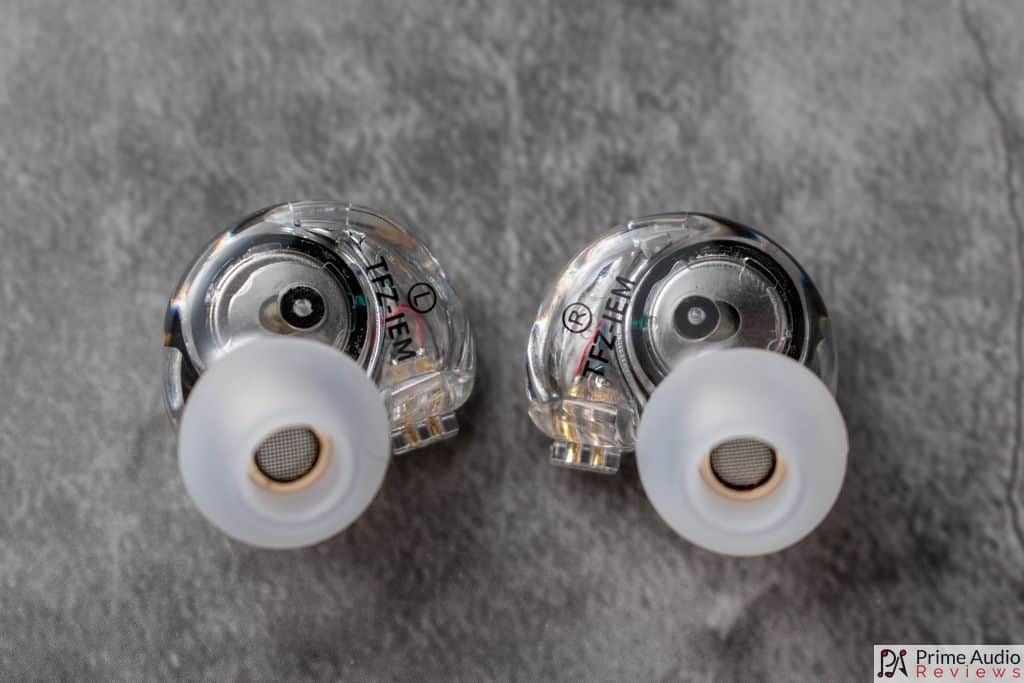
Comparisons
Simgot EN700 Pro
The EN700 Pro (review here) is a single dynamic driver IEM. It has a more linear sound which is more even across bass, mids and treble, than the No.3. It has slightly less bass but is thicker compared to No.3’s snappier bass.
The two IEMs share similarities in the midrange, both are reasonably neutral in this area, although the EN700 Pro has a little more body plus male vocals are more forward and have extra density. EN700 Pro’s treble has better extension, giving its stage larger dimensions and an airier presentation.
In terms of build, the EN700 Pro is very hard to match with its uniquely-styled metal housings. The No.3 fits my ears a bit better and is more comfortable for longer listening sessions. EN700 Pro also comes with a better set of accessories, including a nice carry case but at the same time, the price is considerably higher.
TFZ Queen
The TFZ Queen (review here) is a single dynamic driver earphone. It has slightly more sub and mid-bass than the No.3. The Queen’s bass is more rounded than the No.3, giving it a softer and thicker sound.
In the midrange, the Queen has more body that is carried over from its accentuated bass. Vocals on the Queen are more recessed but have more body and a richer presentation. The No.3’s vocals have greater clarity and articulation but sometimes feel thin.
TFZ Queen has a more elevated lower treble and better treble extension which gives it a larger stage, despite it having extra bass presence. The No.3, in contrast, is more upfront, bringing the listener closer to the stage and making it more intimate, although it has better instrument separation.
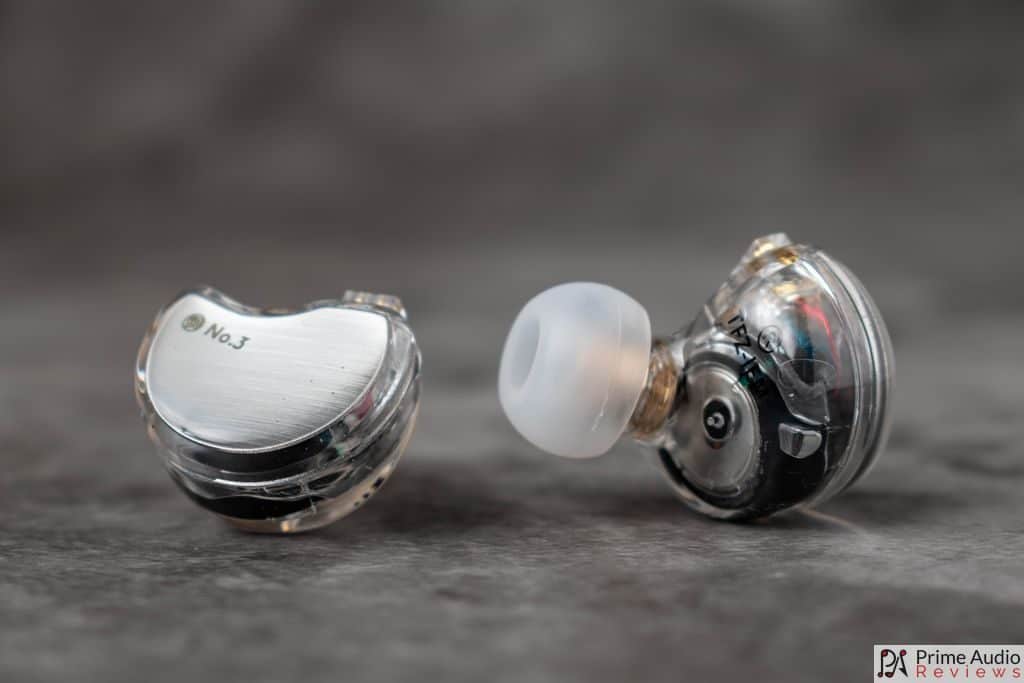
Conclusion
The TFZ No.3 highlights the brand’s commitment to single dynamic driver earphones and serves as a reminder that we should not concern ourselves too much with driver count in correlation to audio performance.
This is a very solid IEM in terms of build and sound quality. It has delicious bass extension, fantastic clarity in the midrange and a non-fatiguing treble. It also has a tidy and modern aesthetic and comes with a nice cable. This is currently one of the better offerings around the $100 mark and should be on your radar if you’re looking for something in that price range.
Specifications
- Impedance: 20Ω
- Sensitivity: 108db/mW
- Frequency range: 5-40000Hz
- Driver: 11.4mm double magnetism, double cavity, double voice coil


